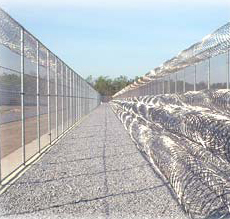This country has an infrastructure crisis. A lot of my blog talks about the need for building fiber since I consider fiber as basic infrastructure in the same way that roads, bridges and sewers are infrastructure. Any town without adequate fiber is already starting to get bypassed in terms of opportunities for its citizens and businesses. And this is only going to get worse with the upcoming Internet of Anything, because only fiber is capable of carrying the vast amounts of data that are going to be generated.
But this country has a crisis with every kind of basic infrastructure. We are not spending enough money to keep our roads, bridges, power, water and other basic infrastructure from slowly deteriorating. The backlog of infrastructure upgrades needed just to get the country back to adequate is staggering.
It has historically been the purview of government to take care of a lot of this infrastructure – and while the federal government takes care of interstate highways and some bridges, the obligation for keeping up with infrastructure falls largely on state and local governments.
And those government entities do not have anywhere near the borrowing capacity to begin tackling the cost of fixing everything that needs fixing or updated. And local property and other taxes would have to be increased a huge amount to pay for it all. Even if there was a taste for doing the needed upgrades, the recent economy has brought many local governments up against their borrowing limits. And we are starting to see municipal bankruptcies, small and large, which is a sign that the municipal borrowing system is cracking around the edges.
And the ability for municipal entities to borrow could get much harder. The recent Detroit bankruptcy is just the tip of the iceberg in terms of large cities that are buckling under accumulated pension costs. And the nonsense going on in nonsense going on in nonsense going on in Washington with the federal debt ceiling might drive up interest rates.
Given all of these factors one has to ask if government financing is the best way to build infrastructure. There certainly are mountains of evidence that municipally funded projects cost more than similar projects constructed by private firms. And while municipal bond interest rates sound cheap, bond money is extremely expensive money due to the additives to bond borrowing such as capitalized interest and debt service reserve funds.
If this country has any hope of putting a dent in the huge infrastructure hole we find ourselves it is going to have to come from bringing private capital to bear on the problem. Where there is a financial crush in the public sector today we are looking at huge amount of private equity on the sidelines today just waiting to be invested in good projects.
The trick to attracting private money for infrastructure is to find a good way to forge public / private partnerships. Unfortunately, there is one key missing component that is making it hard to bring private money into infrastructure deals. And that is development capital.
Development capital is the money that is spent up front in a project to take it from concept to working plan. This includes such things as creating business plans, doing basic engineering, identifying hurdles and solutions – all of those early steps that private equity expects to be done before they will consider a project. In layman’s terms, private equity investors expect somebody else to have done the legwork to prove the feasibility of a project before they will consider it.
We have a development capital gap in this country. There are very few entities today that are willing to tackle spending the development capital needed to prove infrastructure projects. And so hundreds, even thousands of worthy projects are going undone because nobody is willing to spend that first 1% of a project needed to get it started.
What we need is a person or a group of people to step up to provide development capital. This could be government. For instance, for the cost of building one bridge they could instead provide the public development capital to build one hundred bridges. So state governments might be a great place to get this done.
It could also be done privately, meaning that somebody needs to create funds that strictly are development capital. Such funds could produce fantastic returns. But this is a concept that is alien to US investors.
But somebody needs to figure out how we get development capital or our infrastructure is going to continue to deteriorate until we have no choice but to fix it directly with tax dollars.
